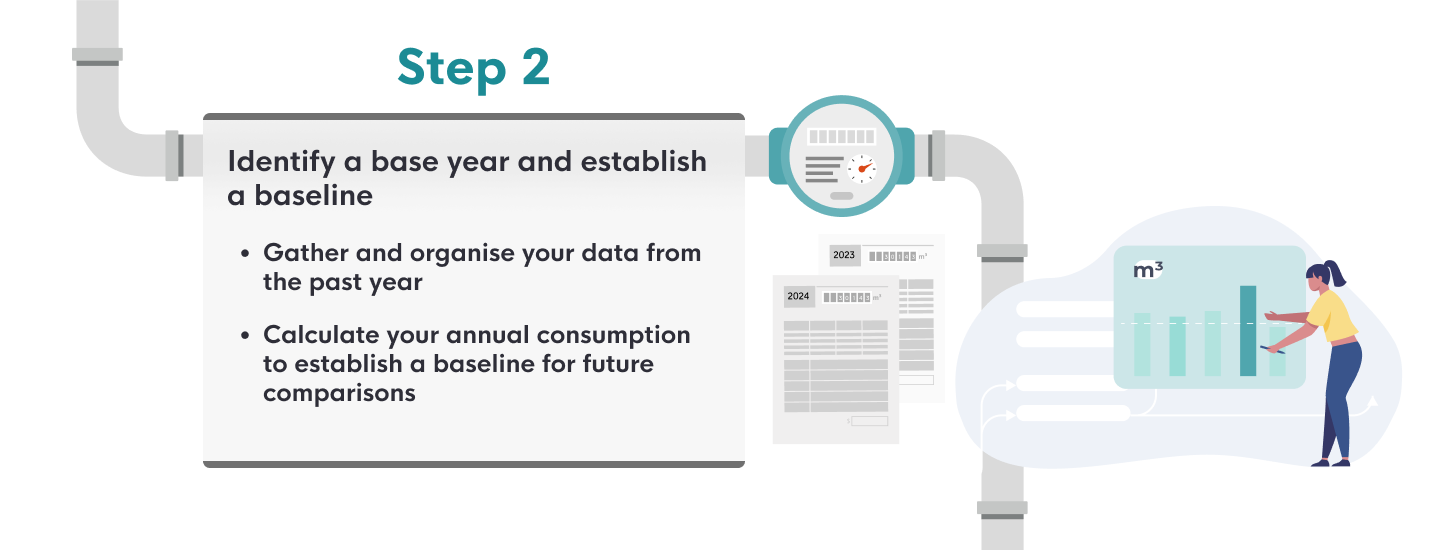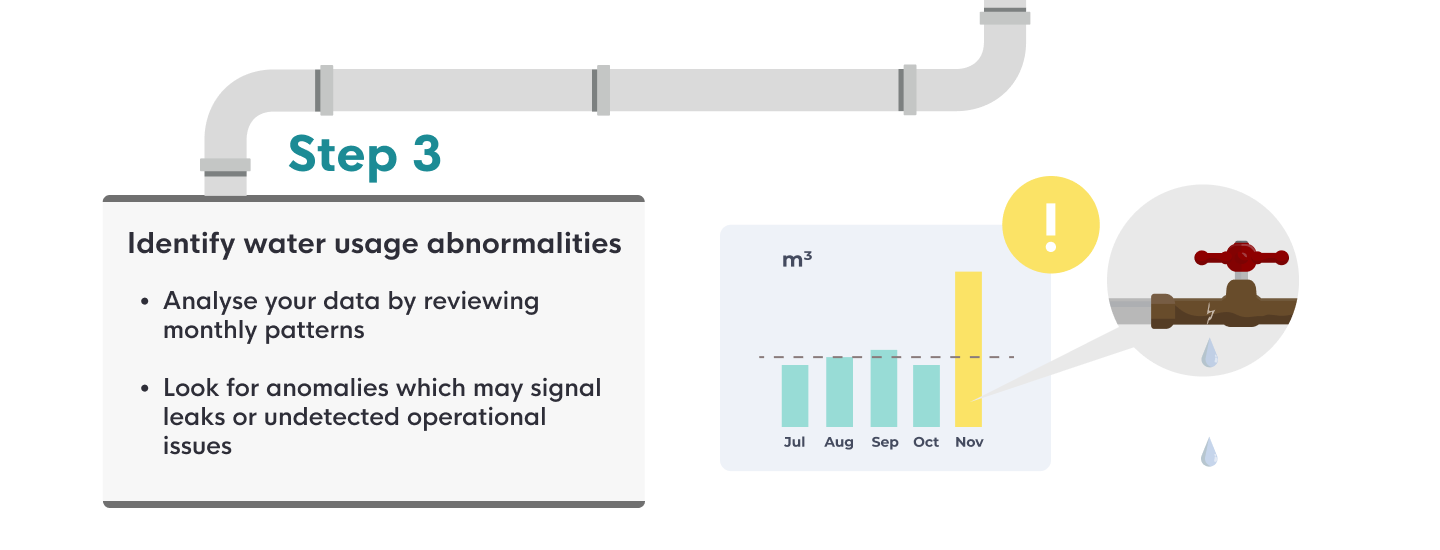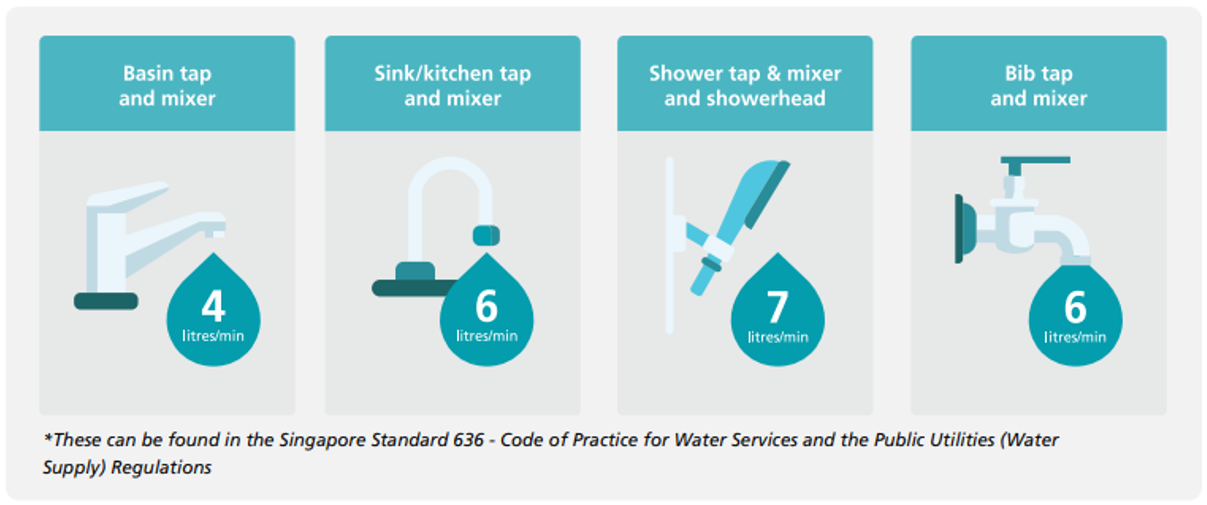- SME Sustainability Hub
- Sustainability Topics
- Water Management
- Stage 2: Measure
Stage 2 (MEASURE): Identify relevant areas for first-step interventions
To manage your water consumption efficiently, identify key areas of water usage, set baselines and detect leaks to avoid water wastage.
In this page:
2.1 Understanding water usage
Step 1: Get to know your water usage
Understanding how much water your business consumes and where it's being used is the first step towards effective water management. Here's how you can start: 
- Track your water usage: Install water meters in key areas of your premises to keep an eye on how much water is being used. This will help you pinpoint exactly where your water is going.
- Regularly monitor water bills: Make it a habit to regularly review your water bills. This not only helps you monitor your overall water consumption but also alerts you to any sudden increases in usage, which could indicate leaks or inefficiencies.
For businesses with heavy water usage, you may also consider using a water balance chart to monitor and optimise your water usage.

- Visualise your water flow: A water balance chart provides a visual representation of how water flows through your business. By mapping out all sources of water input (such as municipal supply, rainwater harvesting, etc.) and where it's used or lost (like in manufacturing processes, cooling or evaporation), you can get a comprehensive overview of your water usage.
- Identify opportunities for saving: With the insights gained from the water balance chart, you can easily spot areas of high water consumption and potential leaks or problems. This makes it easier to prioritise actions that can lead to significant water savings.
- Track improvements over time: As you implement water-saving measures, the water balance chart becomes a powerful tool to track the effectiveness of your efforts. Regular updates to the chart will show you how changes in practices or infrastructure are impacting your overall water usage, allowing for continuous optimisation.
Step 2: Collect water data and set a baseline year
To effectively manage and reduce your water usage, it's essential to have a clear starting point by establishing a base year for your water consumption. This will serve as a baseline for tracking progress and setting targets.

- Gather and organise your data: Begin by collecting water usage data from the past year. This can be obtained from the readings of your water meters or water bills. You can chart the water consumption into a spreadsheet to visualise patterns, identify trends and spot conservation opportunities.
- Calculate your annual consumption: Using the data in your spreadsheet, calculate your total water consumption for the base year. This figure will become your baseline - the yardstick against which all future water usage will be compared.
Common types of water data you can collect include total water consumption, total water discharged, total water recycled, and your water recycling rate. For more information on tracking and calculating your recycling rate, visit PUB’s guide on mandatory water efficiency requirements (page 9).
Step 3: Identify water usage abnormalities
Effective water management involves identifying and addressing abnormalities in usage. For most SMEs operating from an office building, small leaks are a common problem and can gradually worsen, while in sectors such as manufacturing and logistics, anomalies may indicate undetected operational issues. If left unchecked, these can lead to significant water wastage and higher bills.

- Analyse your data: With your water consumption data organised, review the monthly patterns, noting any sudden increases or unusual spikes that may indicate leaks or operational problems that require further investigation. It is important to also compare this aggregated data with performance from the previous year and note down major changes over time.

DID YOU KNOW?
To advance water resilience and environmental sustainability in the non-domestic sector, PUB regularly reviews water efficiency requirements for the industries. PUB has mandated measures to help businesses use water efficiently, which are complemented with sectoral best practices guides.
| Mandatory flow rates requirements |
To prevent excessive water flow, PUB limits the maximum allowable flow rates at water fittings.
|
| Mandatory Water Efficiency Labelling Scheme (WELS): |
The WELS scheme helps to identify the type of water-efficient products that may be purchased for buildings, facilities and commercial equipment. All new developments and existing premises undergoing renovation are required to install water fittings with at least 2-tick flow rates of water fittings. Visit PUB's website to learn more about WELS and details on water fittings. |
| Mandatory Water Efficiency Management Practices (WEMP): |
Under Part IVA of the Public Utilities (Water Supply) Regulations that came into effect from January 2015, it is mandatory for large water users with net water consumption of at least 60,000m³ in the previous year (i.e. qualifying consumers) to:
|
| Mandatory Water Recycling Requirements |
From 1 January 2024, the following requirements will apply to new projects (including expansion of existing plants) that will consume at least 60,000m3 of water annually:
Recycling water on-site for reuse will help companies reap cost-savings from lower water bills, which contributes to their long-term competitiveness and resource resilience. |

